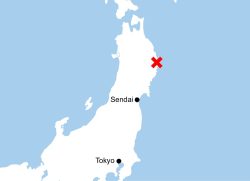16:09 JST, October 25, 2024
Ten years have passed since the central government made regional revitalization a priority policy, but neither the concentration of the population in the Tokyo metropolitan area nor the depopulation of local areas has halted.
The conventional approach of the central government supporting local government efforts with subsidies will likely reach its limits sooner or later. Comprehensive measures from a broader perspective must be hammered out.
During his campaigning for the upcoming House of Representatives election, Prime Minister Shigeru Ishiba has emphasized his intention to double the amount of subsidies for regional revitalization starting next fiscal year. The central government has earmarked ¥100 billion in this fiscal year’s budget.
The policy of regional revitalization was set forth by the Cabinet of former Prime Minister Shinzo Abe in 2014. The central government provides subsidies to support local government measures to deal with the declining birth rate and increase the number of people moving to local areas. The total amount of subsidies provided over the past 10 years amounts to ¥1.7 trillion.
Some local governments have made effective use of subsidies for regional revitalization.
The town of Nagi, Okayama Prefecture, used the subsidies to improve childcare support facilities and provide childcare counseling and temporary childcare services. The town’s birth rate has recovered to 2.95 as a result of a project that provides mothers with short-hour jobs so that they will not be isolated under the pressure of child-rearing.
In addition, some local governments have used subsidies to renovate vacant stores and houses, which are then rented out at low prices, thereby increasing the number of people moving from urban areas.
However, the number of municipalities that can make effective use of subsidies is limited, and overall, depopulation in local areas has become more serious. It is hard to say that the subsidies have produced sufficient results.
Ishiba seems to have strong feelings about this issue, as he served as the first minister in charge of regional revitalization. However, it is not enough to simply double the subsidies without changing the current scheme. As the population continues to decline, measures that appear to be competing for a “small piece of the pie” among municipalities are also of little significance.
Measures to vitalize local areas and address the declining birth rate should be pursued in tandem. It is also important to strengthen measures that will attract companies, providing employment for young people, and create industries that take advantage of the rich natural environment, among other steps. Measures that take into account the opinions of municipalities suffering from depopulation should be considered.
This month, the central government established a new headquarters for regional revitalization. It intends to compile a list of measures to be intensively implemented over the next 10 years.
This headquarters took over the functions of the secretariat of the Vision for a Digital Garden City Nation, which was established in the Cabinet Secretariat by the previous Cabinet of former Prime Minister Fumio Kishida. The initiative, which was aimed at accelerating the digitization of local governments and making administrative services more efficient, ended before it was completed as the Kishida Cabinet resigned.
It is problematic if only new slogans are issued each time a new cabinet is formed without specific measures being put forward.
(From The Yomiuri Shimbun, Oct. 25, 2024)
"Editorial & Columns" POPULAR ARTICLE
-

Artificial Intelligence Expands Possibilities for Foreign Language Learners
-

Build Intellectual, Physical Strength, As Well As Communicative Power / Japan Should Move from Beneficiary to Shaper of World Order
-

Global Economy in Turmoil: Prevent Free Trade System from Going Adrift / Risks to Financial Markets Must Be Heeded
-

Japan-China Strain Set to Persist as Beijing Officials Self-Interestedly Bash Tokyo; Takaichi Unlikely to Back Down
-

French and German Ambassadors to Japan Call for Democracies to Unite in Defense against Russian Disinformation
JN ACCESS RANKING
-

As Chinese Tourists Shun Japan, Hotels and Stores Suffer
-

Osaka-Kansai Expo’s Economic Impact Estimated at ¥3.6 Trillion, Takes Actual Visitor Numbers into Account
-

Japan Govt Adopts Measures to Curb Mega Solar Power Plant Projects Amid Environmental Concerns
-

BOJ Gov. Ueda: Highly Likely Mechanism for Rising Wages, Prices Will Be Maintained
-

Economic Security Panels Debate Supply Chains, Rare Earths; Participants Emphasize Importance of Cooperation Among Allies





















